Umberto Boccioni: a true genius artist, one of the forefathers of ‘Futurism‘; an art movement which emphasized speed, modernism, the city, and to me– is an incredibly optimistic/positive artistic outlook!
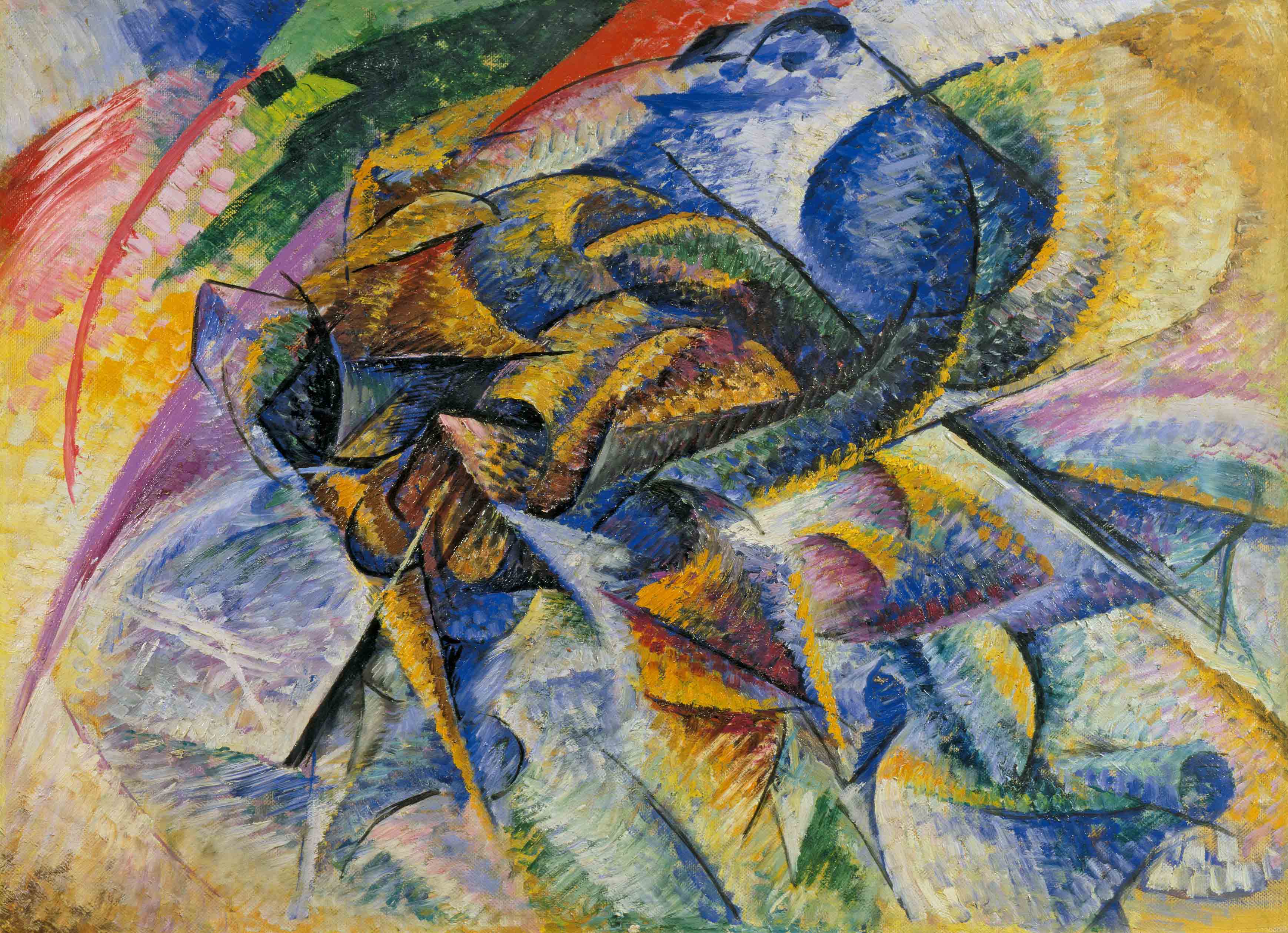
1. Destroy the cult of the past
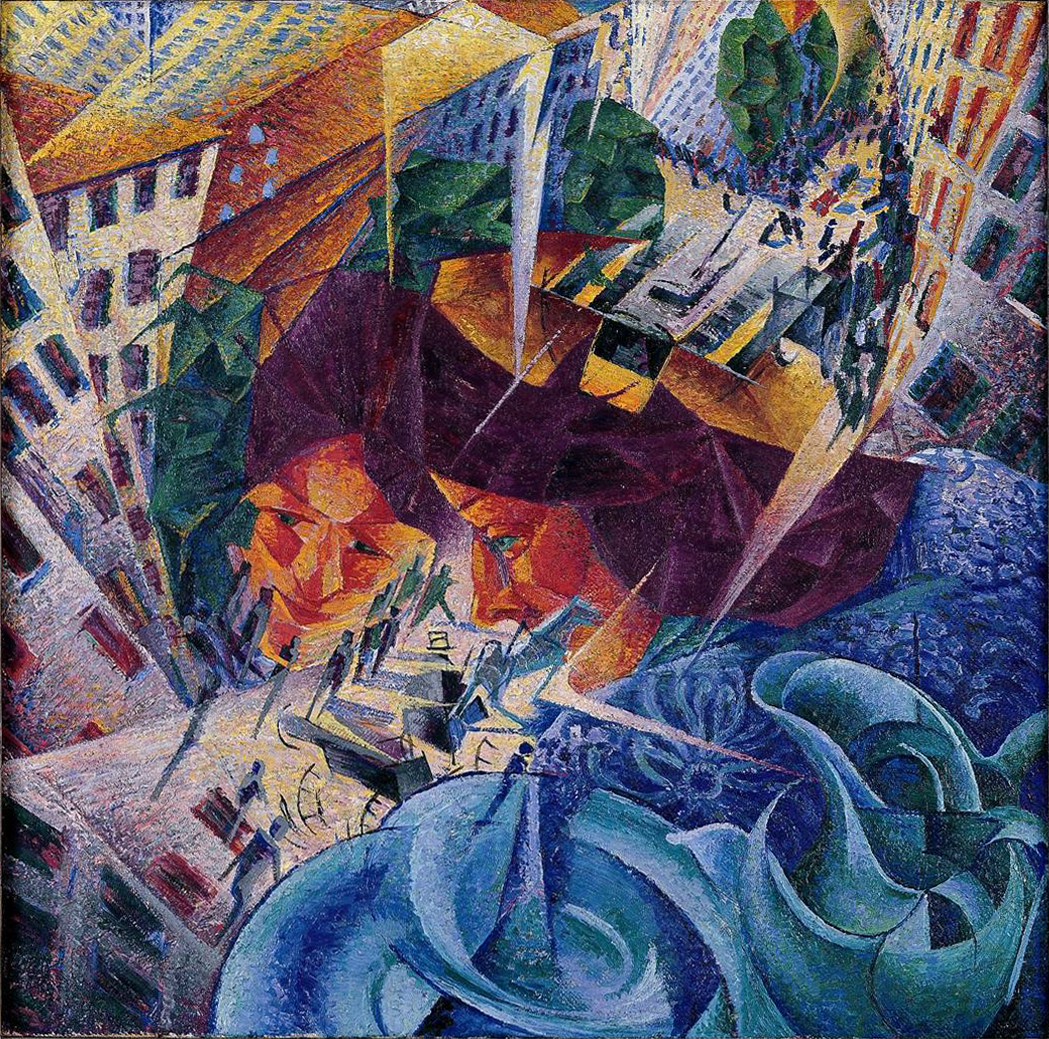
Destroy the cult of the past, the obsession with the ancients, pedantry and academic formalism.
This paves the way for the new!
My takeaway: appreciate the ancients; but don’t let them hold us back from starting NEW things!
2. Encourage daring originality!
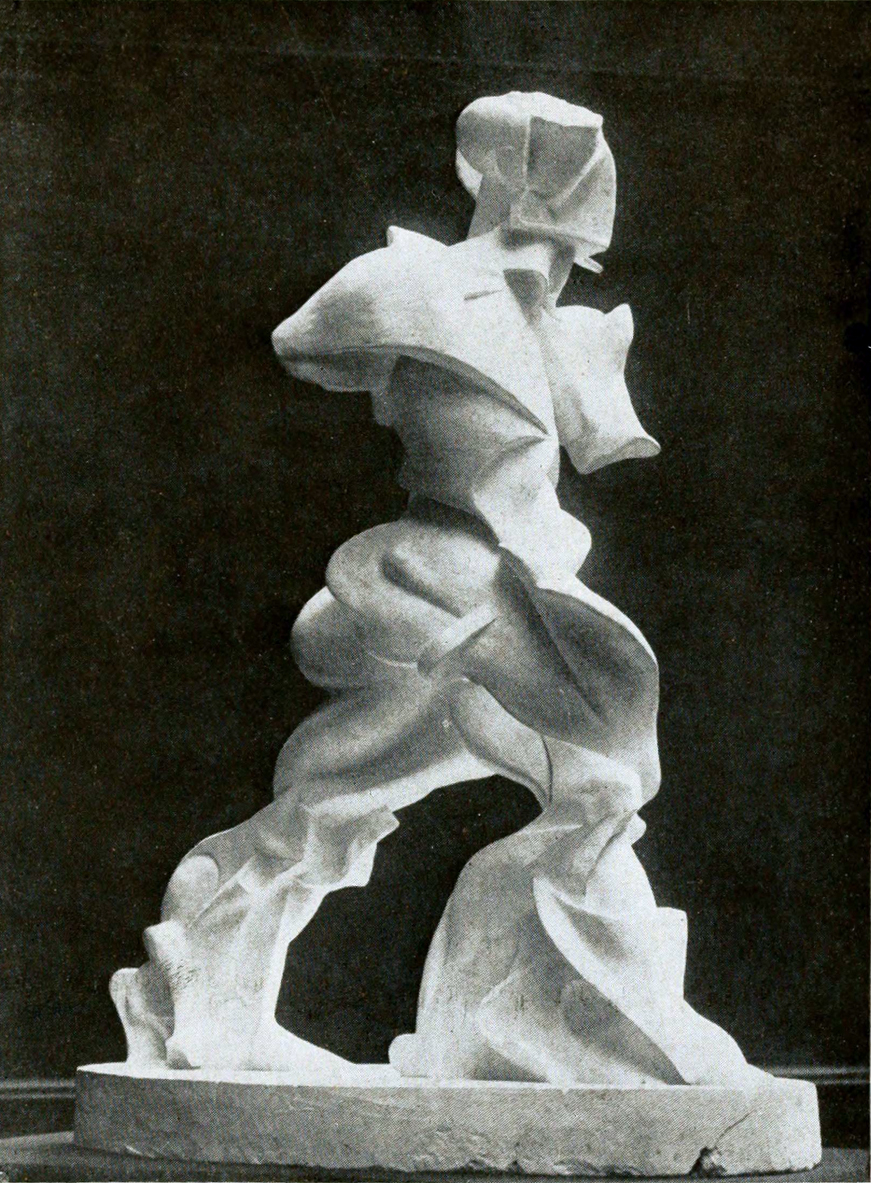
Elevate all attempts at originality, however daring, however violent.
If something is original, innovative, different, and new — it is good! Let us encourage daring artists!
3. Ignore art critics
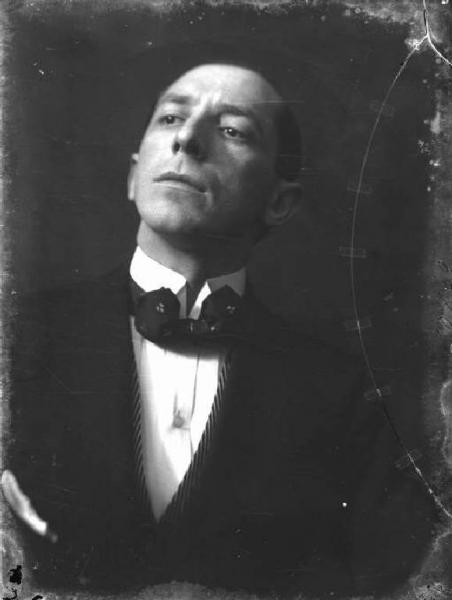
Regard art critics as useless and dangerous.
Art critics are just artists who are too afraid to attempt their own art. Disregard their petty comments.
4. Don’t think of art as ‘good’ or ‘bad’
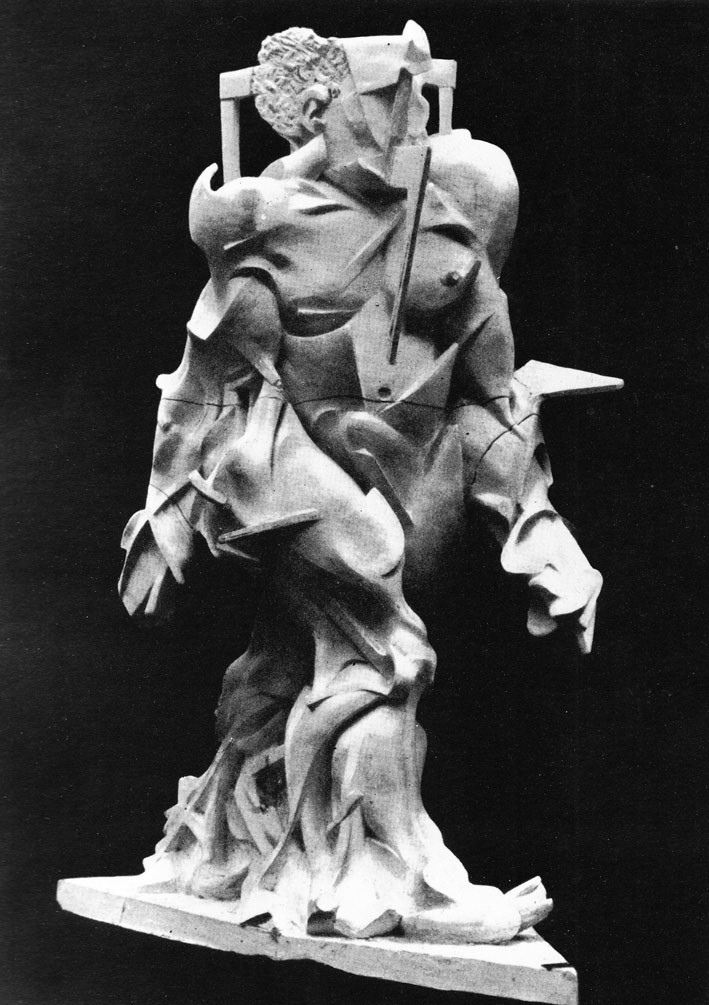
Rebel against the tyranny of words: ‘Harmony’ and ‘good taste’ and other loose expressions which can be used to destroy the works of Rembrandt, Goya, Rodin..
5. Glorify our present-modern world!
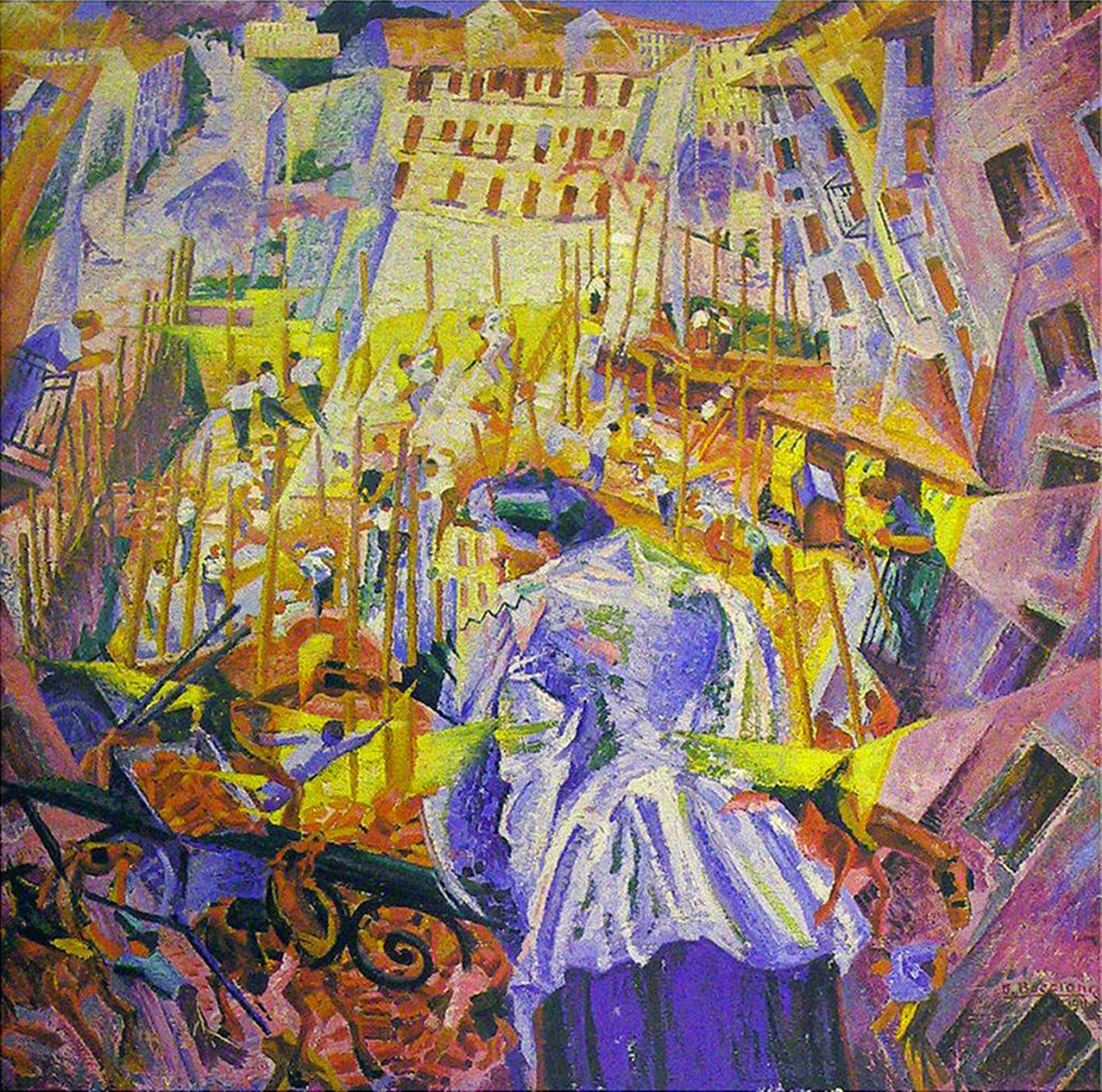
Support and glory in our day-to-day world, a world which is going to be continually and splendidly transformed by victorious Science.
Love science; don’t just romanticize the past.
6. Don’t make a factual portrait of people
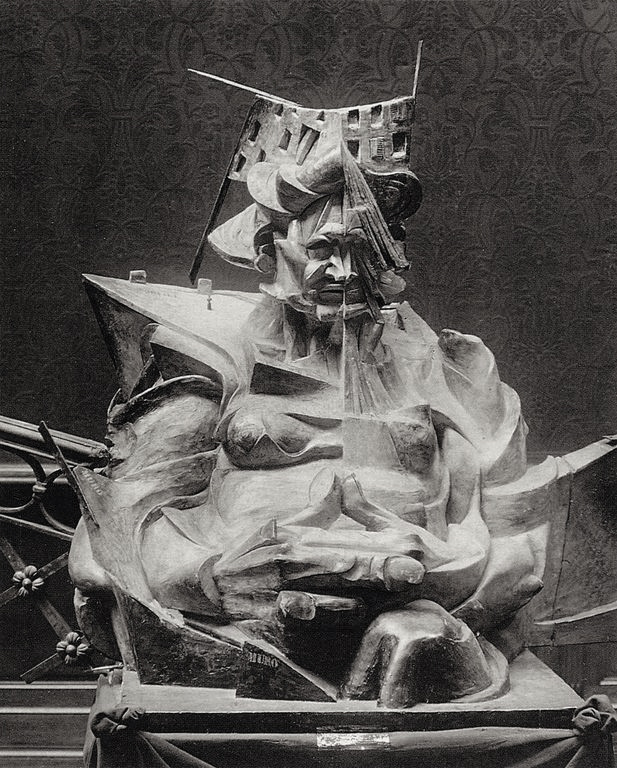
What was the truth for the painters of yesterday is but a falsehood today. We declare, for instance, that a portrait must not like the sitter.. .To paint a human figure, you must not paint it; you must render its surrounding [aura-like] atmosphere. Space no longer exists.. .Who can still believe in the opacity of bodies, since our sharpened and multiplied sensibilities has already penetrated the obscure manifestations of mediums? Why should we forget in our creations the doubled power of our sight, capable of giving analogous to those of X-rays?

Much more interesting to make a portrait to render someone’s presence and feeling — not just a picture-perfect image.
7. Dynamism!
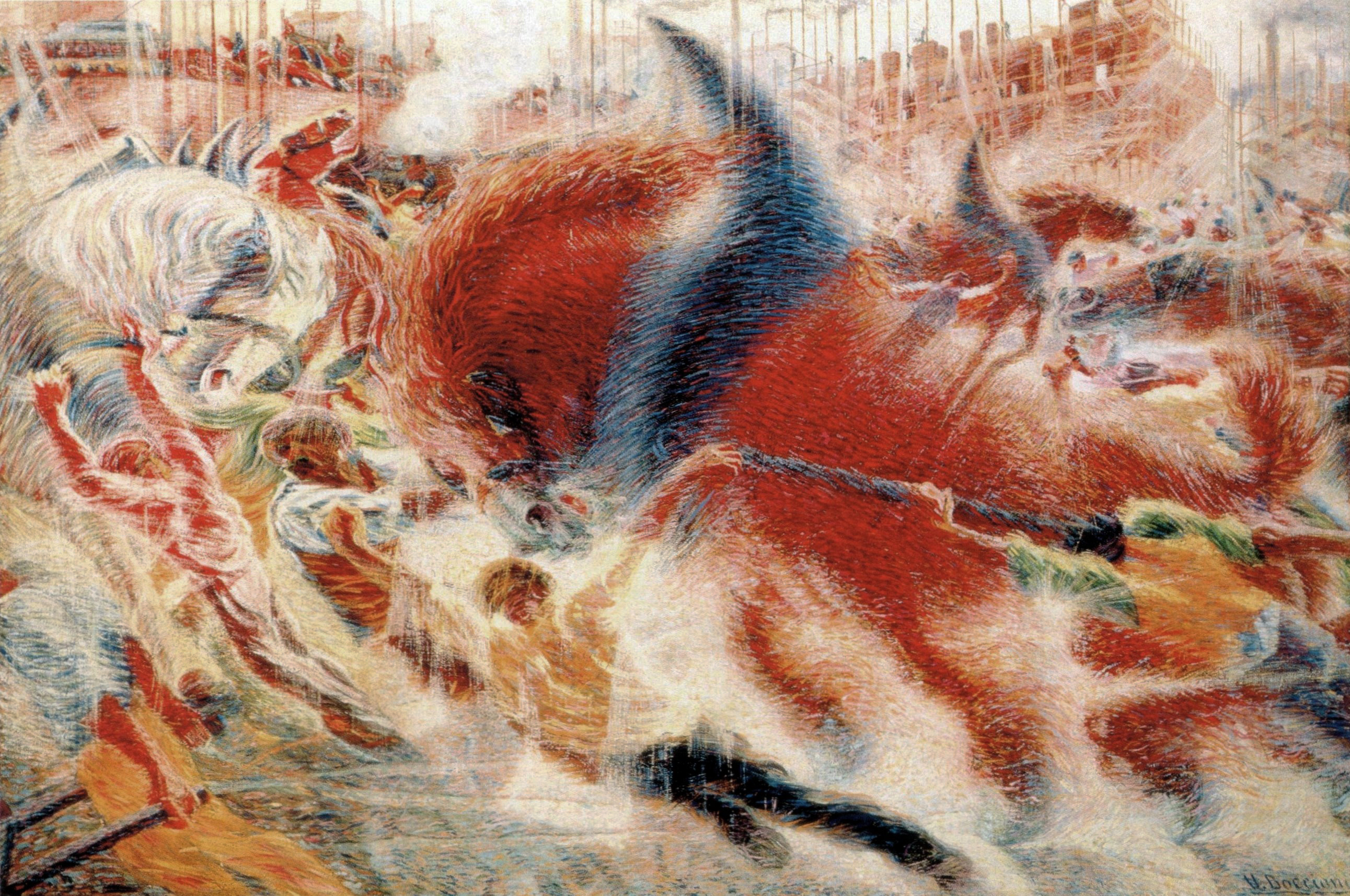
The gesture which we would reproduce on canvas shall no longer be a fixed moment in universal dynamism. It shall simply be the dynamic sensation itself. Indeed, all things move, all things run, all things are rapidly changing.. .We would at any price re-enter into life.
Don’t just have fixed images; let us convey the feeling of ‘dynamic sensation’. After all, life is always rapidly changing, and in a state of flux, evolution, and progression!
8. Let us create more than a picture!
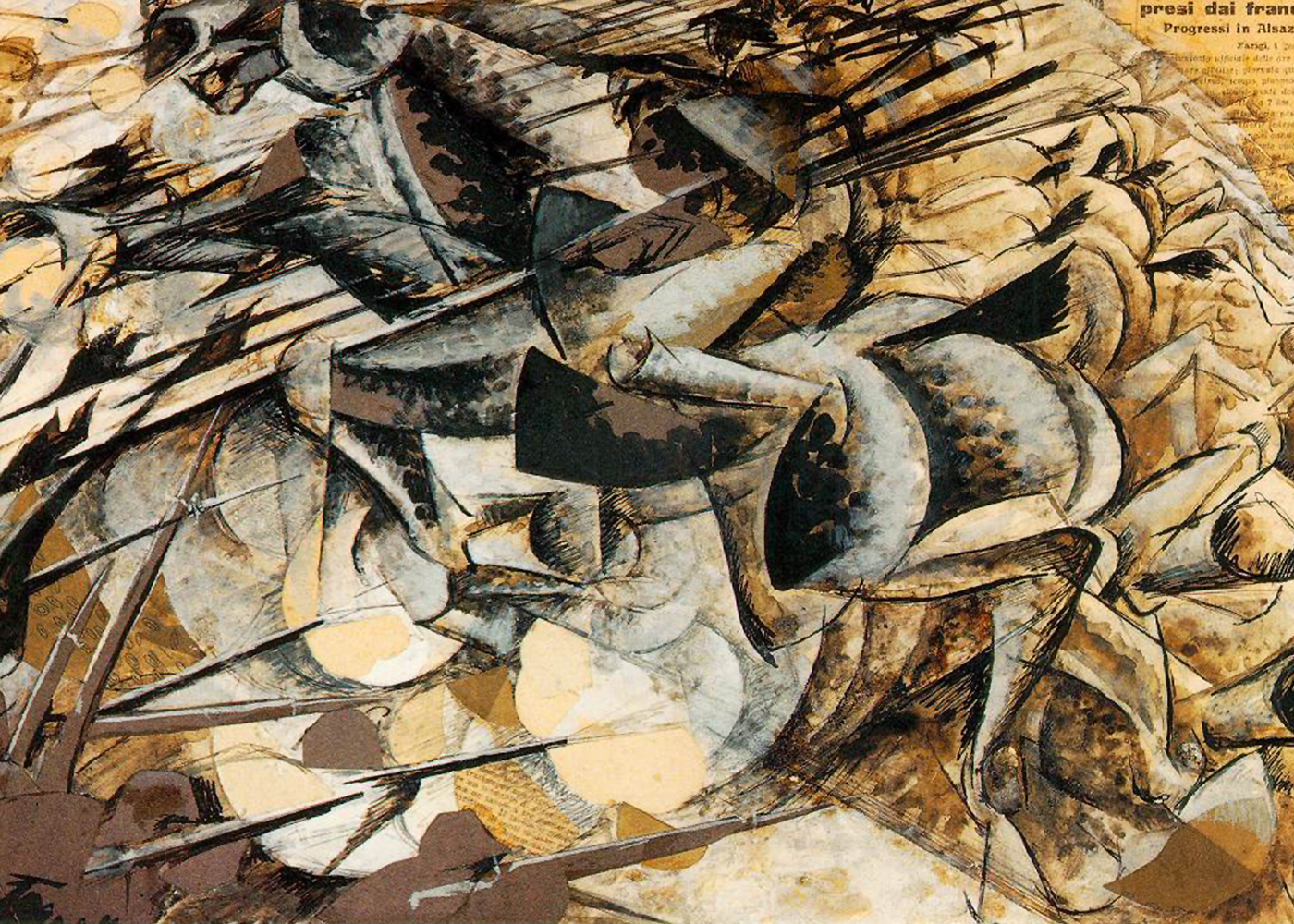
A time will come when the picture will no longer be enough. Its immobility will become an archaism with the vertiginous movement of human life. The eye of man will perceive colours as feelings within itself. Multiplied colours will not need form to be understood and paintings will be swirling musical compositions of great coloured gases, which, on the scene of a free horizon, will move and electrify the complex soul of a crowd that we cannot yet conceive of.
A still photograph by itself is a bit stale; how can we create new colors, new forms of art, to show the deep complexity of human life and the soul?
9. The line never ends

No one can any longer believe that an object ends where another begins.
The line will never cease; it will go on forever.
10. Sculpture is based on planes, volumes; which dictate their forms
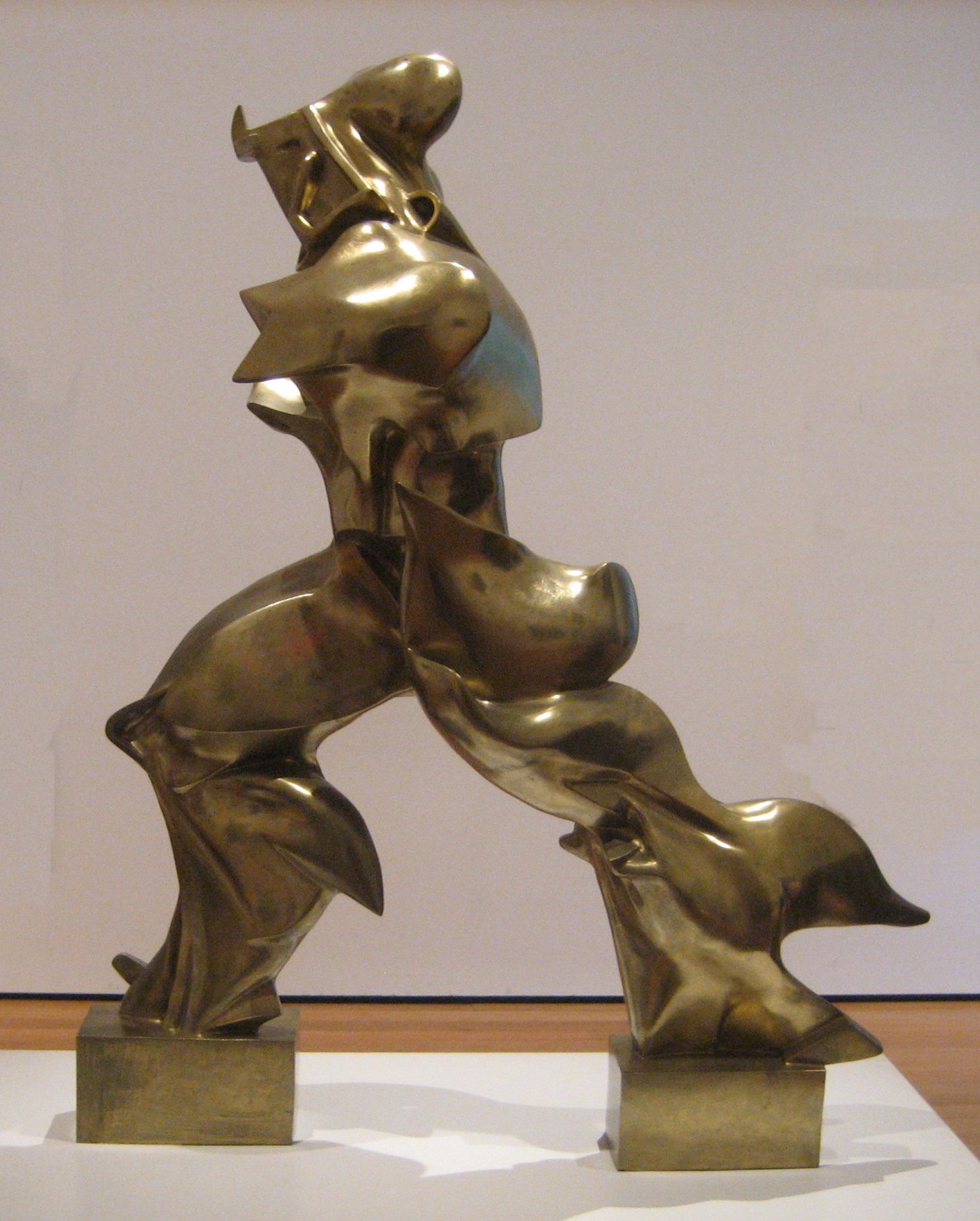
Sculpture is based on the abstract of the planes and volumes that determine the forms, not their figurative value.
11. Create art which shows the state of the human mind!
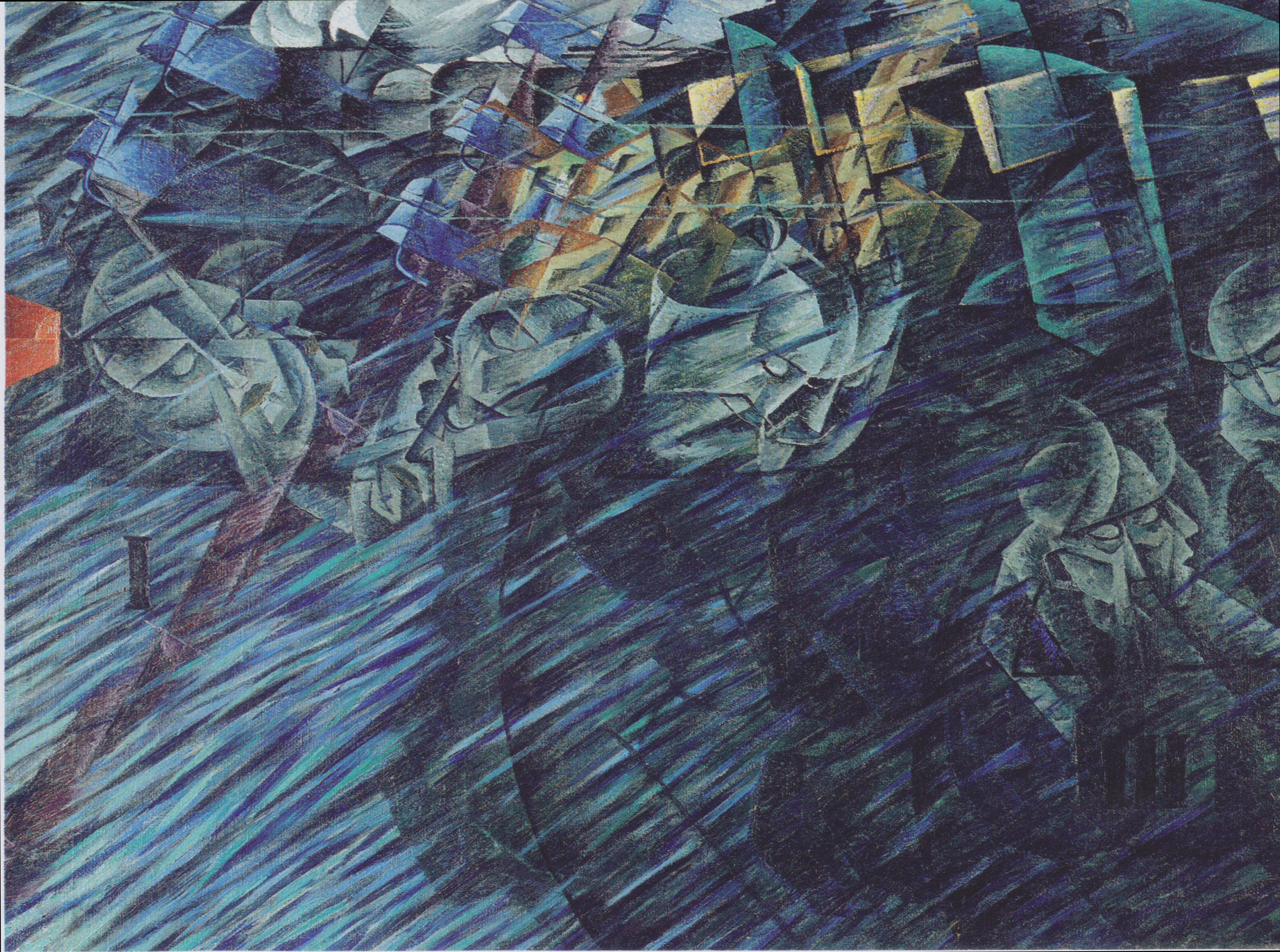
Not only have we radically abandoned the motive fully developed according to its determined and, therefore, artificial equilibrium, but we suddenly and purposely intersect each motif with one or more other motifs of which we never give the full development but merely the initial, central, of final notes.. .We thus arrived at what we call the painting of states of mind.
12. Create visual sensations in your art!
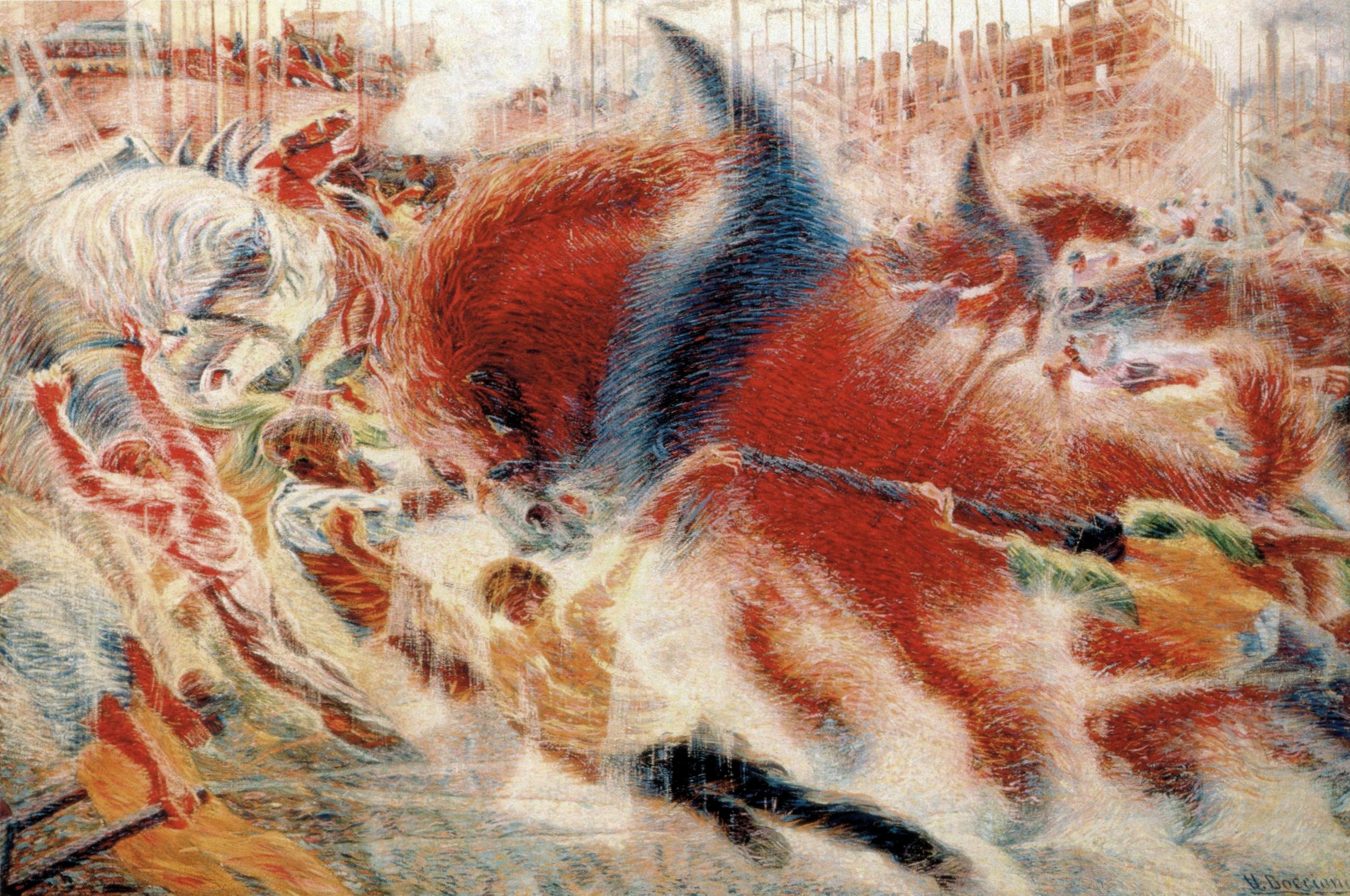
Let us explain again by examples. In painting a person on a balcony, seen from inside the room do not limit the scene to what the square of the window renders visible; we try to render the sum total of visual sensations which the person on the balcony has experienced; the sun-baked throng in the street, the double row of houses which stretch to right and left, the beflowered balconies etc. This implies the simultaneity of the ambient, and, therefore, the dislocation and the dislocation and dismemberment of objects, the scattering and fusion of details, freed from accepted logic and independent from one another. In order to make the spectator live in the center of the picture, as we express it in our manifesto the picture must be the synthesis of what one remembers and what one sees. You must render the invisible which stirs lives beyond intervening obstacles, what we have on the right, or the left, or behind us, and not merely the small square of life artificially compressed, as it were, by the wings of a stage set. We have declared in our manifesto that what must be rendered is the dynamic sensation, that is to say, the particular rhythm of each object, its inclination, its movement, or more exactly, its interior force.
Create a ‘dynamic sensation’ in the eyes, heart, and soul of the viewer.

What rhythm, movement, and force is inside your image?
Conclusion
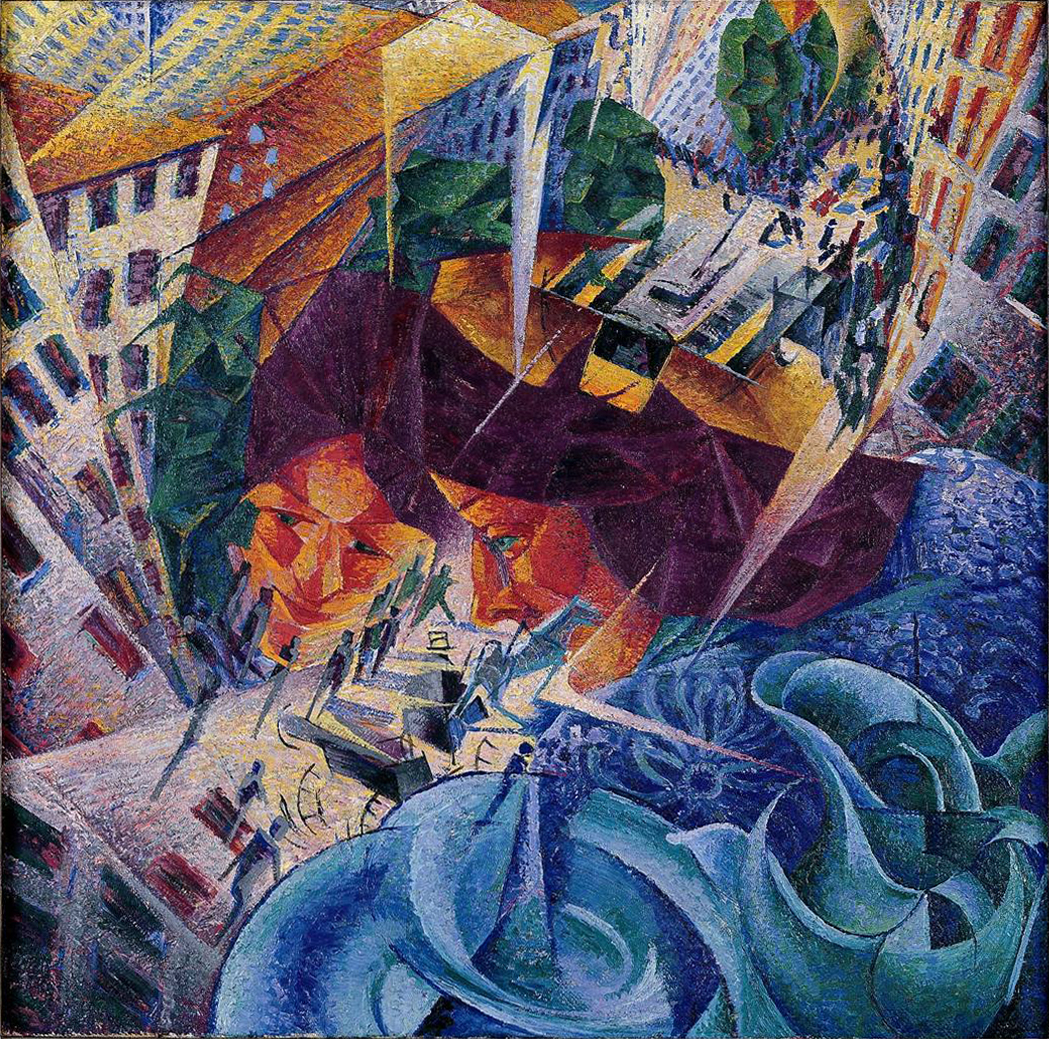
Study futurism to have more hope, optimism, and excitement in life!
I seek to be a futurist photographer; use modern technology/science to improve our quality of life, and to promote optimum through our art/photography!
ERIC
Also read the ‘Manifesto of futurist painters’ below:
Manifesto of Futurist Painters

by Umberto Boccioni, Carlo Carra, Luigi Russolo, Giacomo Balla and Gino Severini
11th February 1910
TO THE YOUNG ARTISTS OF ITALY!
The cry of rebellion which we utter associates our ideals with those of the Futurist poets. These ideals were not invented by some aesthetic clique. They are an expression of a violent desire which boils in the veins of every creative artist today.

We will fight with all our might the fanatical, senseless and snobbish religion of the past, a religion encouraged by the vicious existence of museums. We rebel against that spineless worshipping of old canvases, old statues and old bric-a-brac, against everything which is filthy and worm-ridden and corroded by time. We consider the habitual contempt for everything which is young, new and burning with life to be unjust and even criminal.

Comrades, we tell you now that the triumphant progress of science makes profound changes in humanity inevitable, changes which are hacking an abyss between those docile slaves of past tradition and us free moderns, who are confident in the radiant splendor of our future.
We are sickened by the foul laziness of artists, who, ever since the sixteenth century, have endlessly exploited the glories of the ancient Romans.
In the eyes of other countries, Italy is still a land of the dead, a vast Pompeii, whit with sepulchres. But Italy is being reborn. Its political resurgence will be followed by a cultural resurgence. In the land inhabited by the illiterate peasant, schools will be set up; in the land where doing nothing in the sun was the only available profession, millions of machines are already roaring; in the land where traditional aesthetics reigned supreme, new flights of artistic inspiration are emerging and dazzling the world with their brilliance.
Living art draws its life from the surrounding environment. Our forebears drew their artistic inspiration from a religious atmosphere which fed their souls; in the same way we must breathe in the tangible miracles of contemporary life — the iron network of speedy communications which envelops the earth, the transatlantic liners, the dreadnoughts, those marvelous flights which furrow our skies, the profound courage of our submarine navigators and the spasmodic struggle to conquer the unknown. How can we remain insensible to the frenetic life of our great cities and to the exciting new psychology of night-life; the feverish figures of the bon viveur, the cocette, the apache and the absinthe drinker?
We will also play our part in this crucial revival of aesthetic expression: we declare war on all artists and all institutions which insist on hiding behind a façade of false modernity, while they are actually ensnared by tradition, academicism and, above all, a nauseating cerebral laziness.
We condemn as insulting to youth the acclamations of a revolting rabble for the sickening reflowering of a pathetic kind of classicism in Rome; the neurasthenic cultivation of hermaphroditic archaism which they rave about in Florence; the pedestrian, half-blind handiwork of ’48 which they are buying in Milan; the work of pensioned-off government clerks which they think the world of in Turin; the hotchpotch of encrusted rubbish of a group of fossilized alchemists which they are worshipping in Venice. We are going to rise up against all superficiality and banality — all the slovenly and facile commercialism which makes the work of most of our highly respected artists throughout Italy worthy of our deepest contempt.
Away then with hired restorers of antiquated incrustations. Away with affected archaeologists with their chronic necrophilia! Down with the critics, those complacent pimps! Down with gouty academics and drunken, ignorant professors!
Ask these priests of a veritable religious cult, these guardians of old aesthetic laws, where we can go and see the works of Giovanni Segantini today. Ask them why the officials of the Commission have never heard of the existence of Gaetano Previati. Ask them where they can see Medardo Rosso’s sculpture, or who takes the slightest interest in artists who have not yet had twenty years of struggle and suffering behind them, but are still producing works destined to honor their fatherland?
These paid critics have other interests to defend. Exhibitions, competitions, superficial and never disinterested criticism, condemn Italian art to the ignominy of true prostitution.
And what about our esteemed ‘specialists’? Throw them all out. Finish them off! The Portraitists, the Genre Painters, the Lake Painters, the Mountain Painters. We have put up with enough from these impotent painters of country holidays.
Down with all marble-chippers who are cluttering up our squares and profaning our cemeteries! Down with the speculators and their reinforced-concrete buildings! Down with laborious decorators, phoney ceramicists, sold-out poster painters and shoddy, idiodic illustrators!
These are our final CONCLUSIONS:
With our enthusiastic adherence to Futurism, we will:
Destroy the cult of the past, the obsession with the ancients, pedantry and academic formalism.
Totally invalidate all kinds of imitation.
Elevate all attempts at originality, however daring, however violent.
Bear bravely and proudly the smear of ‘madness’ with which they try to gag all innovators.
Regard art critics as useless and dangerous.
Rebel against the tyranny of words: ‘Harmony’ and ‘good taste’ and other loose expressions which can be used to destroy the works of Rembrandt, Goya, Rodin…
Sweep the whole field of art clean of all themes and subjects which have been used in the past.
Support and glory in our day-to-day world, a world which is going to be continually and splendidly transformed by victorious Science.
The dead shall be buried in the earth’s deepest bowels! The threshold of the future will be swept free of mummies! Make room for youth, for violence, for daring!
This translation by Roberto Brain (Apollonio, Umbro, ed. Documents of 20th Century Art: Futurist Manifestos. Brain, Robert, R.W. Flint, J.C. Higgitt, and Caroline Tisdall, trans. New York: Viking Press, 1973. 24-27.)
Learn From the Masters of Art


